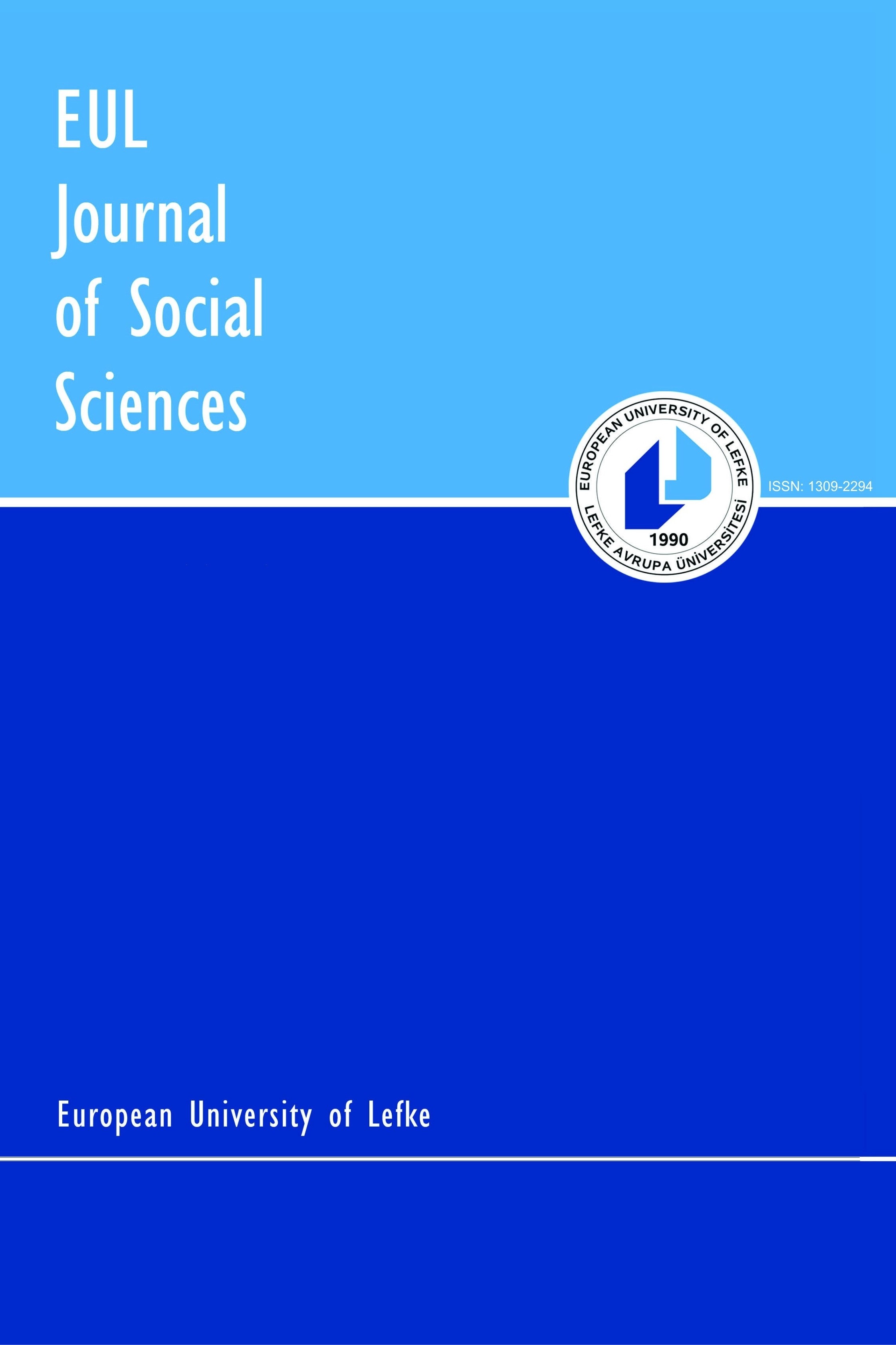THE ROLE OF GREEN BUSINESS STRATEGIES ON SUSTAINING COMPETITIVE ADVANTAGE
Yeşil işletme stratejileri, çevresel maliyeti liderliği, çevresel ürün çeşitlendirmesi, ekolojik nişler
THE ROLE OF GREEN BUSINESS STRATEGIES ON SUSTAINING COMPETITIVE ADVANTAGE
Green business strategies, environmental cost leadership, environmental product differentiation, ecological nic/ıes.,
___
- Ambec; S., Lanoie P. (2008), "Does It Pay to Be Green? A Systematic Overview", Academy of Management Perspectives, Vol. 22 Issue 4, November, pp. 45-64.
- Andrews, C. Vault, D. (2009) "Greerı Niche Market Development", Journal of Industrial Ecology, Vol. 13, Ko. 2, pp. 326-347.
- J.A. Foley et aL.(2005), "Global Consequences of Land Use," Science, Vol. 309,22 July, pp. 570-574. L
- Goodall, C. (2009), The Green Guide for Business, Green Profile, London. Hart, S. L. (1995). 'A natural-resource based view of the firm', Academy of Management Review, Vol. 20, Issue. 4, pp. 986-1014.
- Lash, J. Wellington, F. (2007), "Competitive Advantage on a Warming Planet" Harvard Business Review, March, Vol. 85, Issue 3, pp. 94-102.
- Macl.ean, R. (2008), "Corporate environ-merıtalism", Environmental Quality Management, Spring, Vol. 17 Issue 3, pp. 109-112
- Myers, Samuel S. (2009), WorldWatch Report: Global Environmental Change: The Threat to Human Health World Watch Institute.
- Olson E.G. (2009), "Business as Environmental Steward: The Growth of Greening" Journal of Business Strategy Vol. 30, No. 5, pp. 4- 13.
- Orsato, R. J. (2006), "Competitive Environmental Strategies: When Does it Pay to be Green" California Management Review, Vol. 48, No: 2, pp. 127-145.
- Porter, M. E., Vander Linde, C. (1995), "Green and Competitive" Harvard Business Review, September-October, pp. 120-136.
- Reinhardt, F. L. (1999) "Bringing the Environment down to Earth", Harvard Business Review, July-August, pp. 149-159.
- Schwartz, B. (2009), "Environmental strategies as automorphic patterns of behavior", Business Strategy and the Environment, Vol. 19, pp. 192-206.
- Tuttle, T. Heap, J. (2008), "Green Productivity: Moving the Agenda", International Journal ofProductivity and Performance Management, Vol. 57, No: 1, pp. 93-106.
- Unruh, G. C. (2008), "Biosphere Rules" Harvard Business Review, February, pp. 111-117.
- ISSN: 1309-2294
- Yayın Aralığı: Yılda 2 Sayı
- Başlangıç: 2010
- Yayıncı: Lefke Avrupa Üniversitesi
AN EMPIRICAL STUDY OF THE INTEGRATION AND EFFICIENCY OF STOCK AND FOREIGN EXCHANGE MARKETS IN INDIA
ORGANIZATIONAL LEARNING AS A CORE COMPETENCE FOR PERFORMANCE IMPROVEMENT IN BUILDING CONTRACTORS
INTERNET -BASED PRONUNCIA TION TEACHING: BENEFITS, OBSTACLES AND RECOMMENDATIONS
EXPLORING CONSUMERS' PERCEPTIONS OF AUTOMOBILE BRANDS IN TURKEY THROUGH MULTIDIMENSIONAL SCALING
Meltem ÖZTÜRK, Selin KÜÇÜKKANCABAŞ, Ayşe AKYOL
TOPLUMBİLİM PERSPEKTİFİNDEN AFETİ DÜŞÜNMEK
ENTEGRE ENDÜSTRİYEL KİRLİLİGİ ÖNLEME VE KONTROL ÇALIŞMALARI
SOSYAL SORUMLULUK UYGULAMALARINDA YAKINSAMA
THE LOGIC OF THE CURRENCY BOARD MONETARY REGIME
THE ROLE OF GREEN BUSINESS STRATEGIES ON SUSTAINING COMPETITIVE ADVANTAGE
